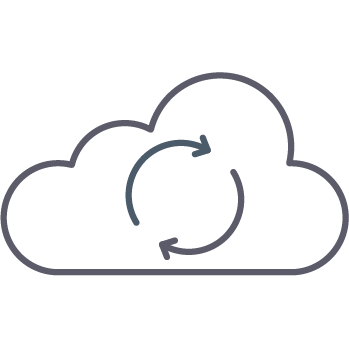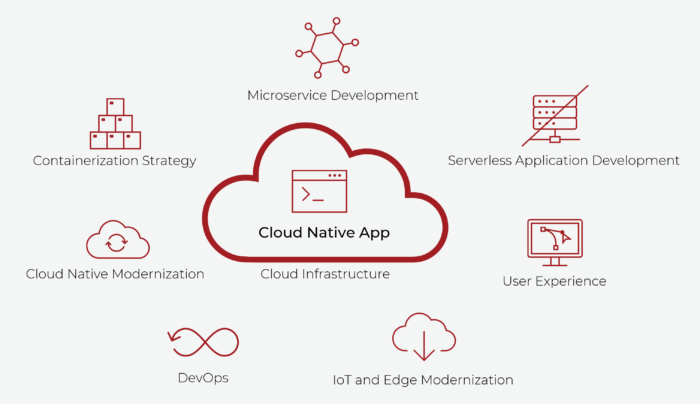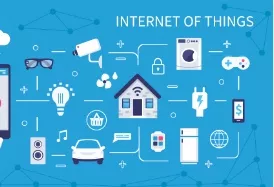 Partner with Cardinal Peak for expert cloud native development services to build and launch your next product. Leveraging cloud native software development, serverless design and technologies like containers and microservices empowers us to develop scalable applications that utilize platform-as-a-service infrastructures and are managed through agile DevOps processes.
Partner with Cardinal Peak for expert cloud native development services to build and launch your next product. Leveraging cloud native software development, serverless design and technologies like containers and microservices empowers us to develop scalable applications that utilize platform-as-a-service infrastructures and are managed through agile DevOps processes.
Cloud native app development results in applications that are easier to scale and maintain than legacy applications because the code is broken into more manageable and maintainable pieces. From day one of development, we push as much infrastructure and software management to the platform as possible, enabling our development team to focus on the business logic rather than the infrastructure.
We utilize existing templates and patterns wherever possible to speed development and lower nonrecurring engineering (NRE) costs. By focusing on open standards for interoperability, leveraging platform-provided tools and making use of well-architected design reviews with the platform vendor as much as possible, we maximize the value of the platform to decrease both operational costs and the time to market.
Why Choose Cardinal Peak for Cloud Native Application Development
As a cloud native services company on the cutting edge, we harness the full potential of the cloud to build resilient, manageable and scalable modern cloud apps quickly and easily.

The following sections of this page offer additional details on some of the tools in our cloud native app development toolkit and how we leverage them to develop easily maintainable systems that scale.
Containerization Strategy
In cloud computing, containers bundle applications like related libraries and configurations into packages that can be deployed and managed across a variety of environments, including different operating systems and Linux distributions. Enabling the isolation of services, applications and components so that they do not interfere with the processes running around them, containers unlock new levels of agility — both in development and deployment. By isolating processes and enabling multiple applications to run simultaneously, containerization eases the application development life cycle, increases reliability and security, and makes systems less prone to configuration errors. Containerized applications are easy to scale and highly portable. Utilizing container platforms like Docker with Kubernetes orchestration, for example, empowers Cardinal Peak to enable autonomous services.
Microservice Development
As developers create larger, more complex applications, microservices take on increased importance. With a cloud native approach, a single application is comprised of multiple smaller services that each run within its own process. Each microservice has its own technology stack and communicates with other microservices over REST APIs, event streaming and message brokers. This unique approach simplifies maintenance with smaller codebases and allows for the addition of new features without having to update the entire application. Microservices can be scaled independently of one another, reducing the costs associated with scaling an entire application, isolating faults to a single microservice and preventing cascading failures. At Cardinal Peak, we often recommend microservice architecture for resilience, scalability, flexibility and robustness and assist customers with microservice implementation and container orchestration in a Dockerized environment using Kubernetes.
Serverless Application Development Services
Serverless computing enables developers to build applications faster and without the need to manage server infrastructure. The cloud platform automatically handles provisioning, maintaining and scaling the server infrastructure in response to demand. Cloud platforms, such as AWS, meter capacity on demand so that when a serverless function is sitting idle, it doesn’t cost anything. At Cardinal Peak, we help develop serverless products for our clients that are faster to develop, easier to scale and lower cost to run.
User Experience
Cloud native applications may present a variety of different user interfaces through web portals and mobile apps. At Cardinal Peak, we are used to developing role-based access control systems to accommodate all the users that need to interact with the system. Whether customers or your employees, thoughtful UX design can minimize friction and eliminate the need for manuals and training. Bringing the same UX/UI design principles to every interface for your digital product, our cloud native app development process typically begins with workshopping with your team to understand both the desired functionality and your brand promise, as well as how the product integrates into your larger portfolio. We leverage that information to create clickable models that can be vetted with your stakeholders quickly before being finalized into a complete user interface.
IoT and Edge Modernization
The capabilities of both cloud and edge computing have expanded tremendously in the last few years to modernize IoT systems to take advantage of new development models. Leveraging a cloud native design is likely to lower operational costs, reduce maintenance costs, allow systems to scale and provide a platform that enables the faster release of differentiating features. Similarly, as edge computing capabilities continue to expand, organizations across industries are partitioning more of the work to the edge to reduce latency, minimize cloud operational costs and increase user privacy. Experts in edge devices providing cloud application development services, Cardinal Peak can help you assess how modernization would benefit your company.
DevOps
Combining software developers (dev) and operations (ops), DevOps automates and integrates the processes between software development and IT teams. At Cardinal Peak, we leverage that set of practices, tools and thinking to increase the speed and quality of cloud native software development. Designed to support the continuous integration and delivery pipeline, our DevOps processes and cloud native application development services combine perfectly to provide the fastest path for developing and delivering new features in your digital products.
Cloud Native Modernization
From reduced operational costs and maintenance costs to increased scalability, there are myriad benefits to modernizing your existing legacy revenue-generating applications with a cloud native approach. At Cardinal Peak, we refactor code where necessary and containerize code where possible, providing the best of both worlds: Cloud native application performance without the cost of reengineering your entire system. Our cloud native modernization process reduces technical debt, lowers operational costs and provides a next-generation platform that organizations can build on for years to come.
Cloud Native Software Development Case Studies
Cardinal Peak is a leading choice to develop cloud native applications, supporting innovative software development projects, including those detailed below. Contact our team today to leverage our cloud native development services.

HIPAA-Compliant VMS and App Development
This case study saw us collaborate with a neurosurgeon in Phoenix to create a cloud native HIPAA-compliant application that improves patient compliance, limits risk and saves time.

Preparing Legacy Software for Future Platform Growth
Leveraging cloud native software development processes refined over hundreds of projects, we helped our client increase the speed and productivity of future development by unlocking a new level of continuous integration and delivery.

Modernizing FeedbackNow By Forrester Architecture
This case study saw us collaborate with a neurosurgeon in Phoenix to create a cloud native HIPAA-compliant application that improves patient compliance, limits risk and saves time.
Leveraging cloud native software development processes refined over hundreds of projects, we helped our client increase the speed and productivity of future development by unlocking a new level of continuous integration and delivery.
Cloud Native Application Development FAQs
What Does “Cloud Native” Mean?
The term “cloud native” refers to an application built and deployed leveraging the benefits of the cloud. Cloud native applications exist in the public cloud, instead of being in an on-premise data center. Traditional app development prioritizes the application itself first before focusing on where the infrastructure is hosted, but that is not true of cloud native development. At Cardinal Peak, when we say, “cloud native development,” that means we factor in every consideration from the very first step of the development process to nail down where the application will be hosted and the different kinds of cloud services or technologies that can be leveraged to improve the end product.
What is Cloud Native DevOps?
A popular approach to software design and development, DevOps is a set of practices used to build, test, deploy and monitor applications, including cloud native ones. DevOps, by incorporating agile principles and practices, empowers the development and operations teams to collaborate more easily. DevOps eliminates the silos between those teams to enable continuous software delivery.
What’s the Difference Between Traditional and Cloud Native Development?
As mentioned in the first FAQ, cloud native development focuses on the app first and where the infrastructure is hosted second. Cloud native app development, however, considers all factors from day one — the app, where the infrastructure is hosted, the kinds of services or technologies that can be leveraged from that platform, and any other details that impact the product’s development. Between development time, OS dependency, the pace of release, cost and security, there are several differences between traditional and cloud native development.
What’s the Impact of Cloud Native Development?
Leveraging cloud infrastructure as a service has transformed digital product development. Today, solutions like Amazon Web Services provide developers the opportunity to use infrastructure that is not self-managed. This unlocks opportunities that wouldn’t otherwise be available if determining where the infrastructure will be hosted isn’t done until the end of the development process.
With AWS, we’re able to integrate new technologies and focus on application logic, rather than stressing over considerations such as operating system management, software patches, and durability and availability concerns. There are no cloud costs unless the cloud services are being utilized, so organizations don’t have to pay for computing or bandwidth unless someone leverages their service, which alters the way products are developed. While developers traditionally develop and test apps locally before deploying to the cloud or sending to the QA team, cloud native application development services focus on deploying to the cloud on day one.
Cloud Application Development Services Articles
Do you want to learn more about our cloud native application development services? The blog posts in this section provide insight into our cloud native software development process, detail digital transformation and highlight important considerations during development.

Understanding the Cost Drivers Impacting Queue Pricing

Migrating from an IoT Platform to Bring Tech In-House
In this blog, our expert engineer highlights how tapping the expertise of a contract engineering company like Cardinal Peak can decrease time to market without increasing staff during cloud migration.

From ROM through SoW: The Importance of Communication During Product Development
This blog post details the earliest stages of our product engineering process, from the initial call through to the development of a scope of work, highlighting the critical importance of communication.
In this blog, our expert engineer highlights how tapping the expertise of a contract engineering company like Cardinal Peak can decrease time to market without increasing staff during cloud migration.
This blog post details the earliest stages of our product engineering process, from the initial call through to the development of a scope of work, highlighting the critical importance of communication.
